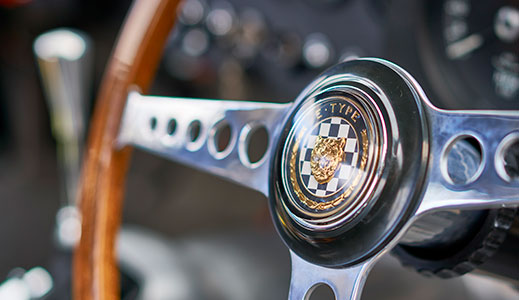The Racing History of the Jaguar E-type
How Coventry's iconic sports car evolved into a track racer, and how a rivalry with Ferrari ultimately spawned the innovative Lightweight E-type.

The E-type was never meant to race. Its sweeping bodywork certainly took inspiration from the C-type and D-type's sleek aerodynamic profile, while its monocoque chassis and still-novel disc brakes had been race-honed at Le Mans. In contrast, the E-type's innovative independent rear suspension was designed to be B-road friendly, while the 3.8-litre straight-six XK engine was tuned to be easier to drive at low speed.
As demand for E-types outstripped production capacity at
Brown's Lane, there was little need - and no resource - for the E-type to go
racing as a publicity exercise. In 1961, though, the FIA created a GT category
for production sports cars, into which the E-type fit perfectly.
The E-type's first race came one month after the car was unveiled at the 1961 Geneva Motor Show, with future F1 champion Graham Hill and Roy Salvadori driving a pair of E-types at Oulton Park. Hill was in ECD 400 - one of the first E-types delivered to Jaguar dealer Tommy Sopwith - and won the 25-lap race from the Aston Martin DB4 of Innes Ireland, with Salvadori third. The Ferrari 250 GTs were fourth and fifth.
In Britain, the E-type - driven by the likes of Mike Parkes and Bruce McLaren - went on to win at Goodwood, Silverstone and Brands Hatch. When the E-type made its international debut at Spa-Francorchamps, though, it struggled to match the powerful Ferraris on the Belgian track's long straights, and Parkes could only manage second.
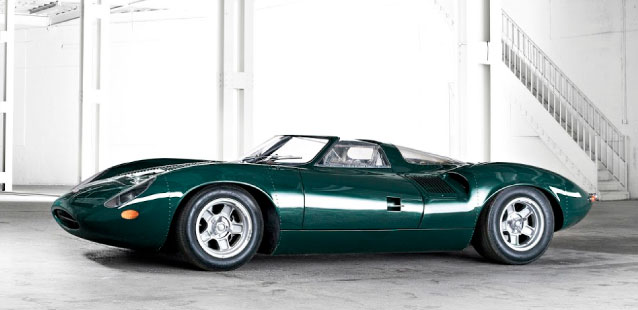
American Briggs Cunningham, who had raced Jaguar's E2A prototype in the 1960 Le Mans 24 Hours, gave the E-type its Le Mans debut in 1962. Sharing his car with Salvadori, he finished fourth, ahead of a second E-type driven by Peter Sargent and Peter Lumsden. The Ferraris dominated the podium. It was clear something had to be done to keep the E-type competitive on the international scene.
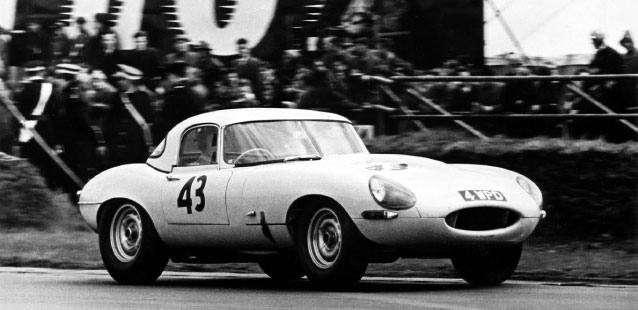
Jaguar was working on a V12-powered, mid-engined car for Le Mans - a design that would evolve into the iconic XJ13. The interim solution for the E-type was a series of 'specials', tweaked for racing. The first was the Low Drag Coupe - registered as CUT 7, when raced by Dick Protheroe. Jaguar's chief designer, pioneering aerodynamicist Malcolm Sayer, created a more streamlined body shell, made from lighter-gauge steel and selected aluminium panels with a stripped-down interior to save weight. The result was a boost to top speed of 20mph, as well as improved handling in the corners.
Encouraged, Jaguar decided to create a limited run of 18
Lightweight E-types, with a full aluminium body. Based on the open-top
roadster, but with a coupé-style hardtop roof, they included a race-spec 350bhp
version of the 3.8-litre XK straight-six engine and a five-speed gearbox. The
imminent arrival of the Lightweight E-type worried Enzo Ferrari so much that he
immediately commissioned the lighter and more powerful Ferrari 250 GTO.
Two Lightweight E-types were shipped to the US to take part in the 1963 Sebring 12 Hours. First time out, the car won its class and finished seventh overall at the hands of Ed Leslie and Frank Morrill. The first Lightweight E-type - 4 WPD - went to Jaguar team owner John Coombs. With Hill at the wheel, it won at Snetterton, Goodwood and Silverstone - twisty British circuits where the torque of the 3.8-litre straight-six XK engine could propel the Jaguar out of corners faster than Ferrari's 3-litre V12.
However, on larger, faster international circuits - such as Spa-Francorchamps, the Nurburgring and Le Mans - the improvements to the Lightweight E-type weren't enough to keep the Jaguar ahead of its Italian rivals. In 1963, Cunningham entered three Lightweight E-types at Le Mans, but could only manage ninth place. Ferrari locked out the top six results.
For 1964, Hill and Coombs modified Lightweight E-type 4 WPD with wider wheels, higher-lift camshafts and stiffer suspension, giving the car a new lease of life. They also gave a test to a rising Scottish single-seater driver, who immediately posted the best time ever posted by an E-type. His name was Jackie Stewart, and he went on to take victory in the car at Brands Hatch.
Following the introduction of a V12 engine in 1971, the E-type experienced a resurgence in racing success in the US, drivers Lee Mueller and Bob Tullius using the extra power of Coventry's import to take on their rivals in the SCCA series.
Since then, the E-type continues to be raced, honed and modified by private owners, and is always a popular and successful entry in national and international historic sportscar series. The E-type may not have been Jaguar's most successful racer, but perhaps its legacy is to remain Jaguar's most popular.
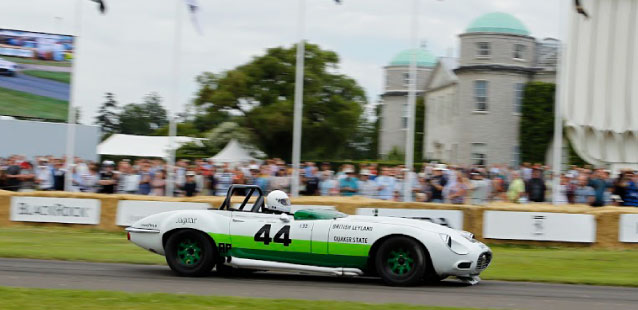
Discover More
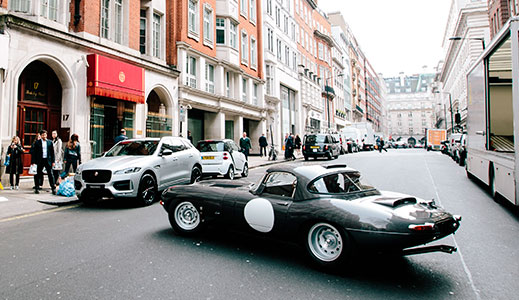
A New Home In Mayfair London
The Jaguar Lightweight E-type arrives at Stratstone's London showroom
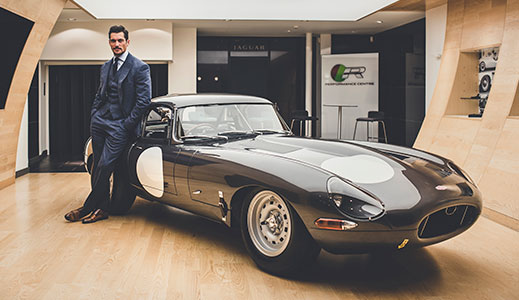
David Gandy Visits the E-type
Britain's leading male model talks about his passion for style and cars
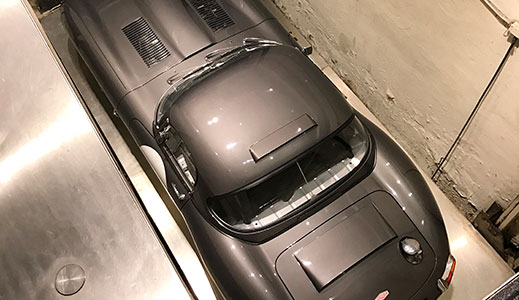
Exclusive Appearance in Mayfair
YouTube influencer and car enthusiast Shmee150 visits the Lightweight E-type

